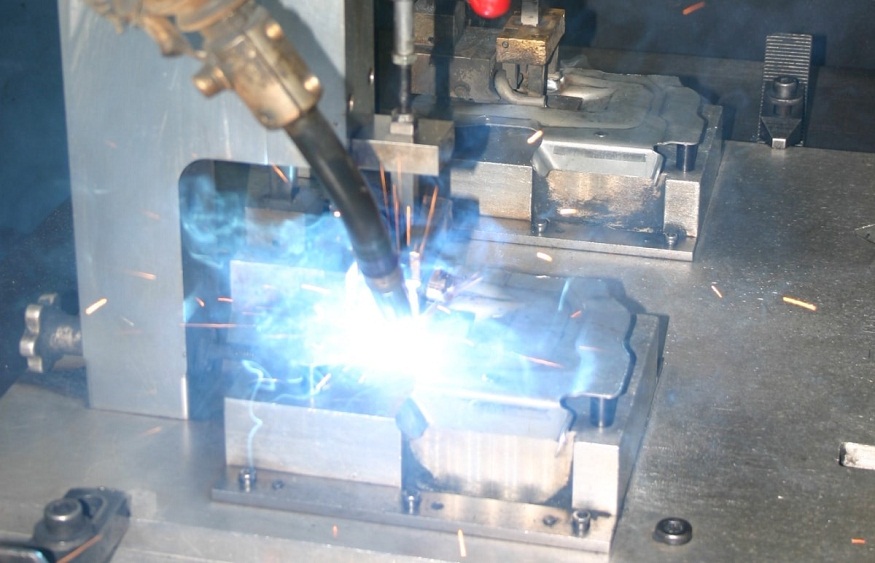In the manufacturing and construction industries, welding is a mainstay as the primary way to join materials. In the field of industrial machinery companies, one of the greatest needs is for effective welding solutions to create strong yet durable products. In this article, we are going to discuss welding solutions that are specific to industrial machinery and their relevance, technologies, applications, and trends.
Understanding welding solutions in the industry
Welding solution is a collective term for a plethora of techniques and technologies for joining materials, most often metals or thermoplastics, either through heat or pressure. These solutions range from conventional methods, such as arc and MIG (Metal Inert Gas) welding, to advanced systems like laser welding and electron beam welding. Each method offers its own particular set of advantages, necessitating that industrial machinery companies examine their requirements and make a selection from among them. The welding solution selected determines the efficiency, overall cost, and quality of the welded product.
The role of industrial machinery companies
Welding solutions are heavily relied on by Industrial Machinery Companies to fabricate components that must meet stringent quality and performance standards. These companies serve many industries, including automotive, aerospace, construction, and manufacturing, all with their unique demands for durability and precision. Often, the machinery produced contains many welded parts, which makes the welding an integral part of avoiding the loss of the structural integrity and the reliability of the product. For instance, the automotive industry needs accurate welds in vehicles to ensure safety and performance, while the aerospace industry needs superior quality welds to cater for severe conditions. With the adoption of sophisticated welding technologies and applications like laser welding and other automated solutions, these companies can un-leverage production capacities and consequently minimise downtimes, leading to increased competitiveness in the global market. Moreover, better welding technologies make it possible to provide narrower customised orders quickly, which helps companies be more responsive to clients. Lastly, a sound welding strategy will not only address compliance concerns but also advance the welding capabilities of these industries.
Technological advances in welding
Due to continuous advancements in the field of technology, the welding field is developing with every passing day to enhance efficiency and precision. The use of automation and robotics in the welding process has become increasingly mainstream, allowing industrial equipment companies to incorporate higher levels of accuracy and consistency. Repetitive tasks are carried out with low human intervention from automated welding systems that minimise the chance of errors as well as enhance productivity. These systems can be programmed to adapt to various welding scenarios to produce high-quality outputs on a wide range of projects. In addition, smart technologies like IoT (Internet of Things) devices are integrated to remotely monitor and analyse data in real-time. This capability allows companies to monitor performance metrics to identify possible problems before escalation and to increase the overall efficiency of welding processes. Additionally, predictive maintenance enabled with IoT can reduce downtime and extend equipment life. With these technologies advancing, they do not only assist in making better welds; rather, they help to create a more streamlined, responsive manufacturing environment.
Applications of welding in industrial machinery
Welding solutions apply to all kinds of industrial machinery products and components. Welding, an essential part of production, is used to assemble large equipment such as cranes and bulldozers and to manufacture intricate components for engines and turbines. To produce high-quality welds in critical applications, specialised welding techniques, such as TIG (Tungsten Inert Gas) welding, are commonly used to allow components to endure operation stresses, including extreme temperatures, mechanical loads and so on. Additionally, the versatility of welding solutions means that industrial machinery companies can offer welding solutions to meet customised projects, such as including designs and specifications for different industries. This adaptability is instrumental as different industries evolve and demand for innovations that improve performance and efficiency rises. In addition, increased robotic welding technologies have led to faster production rates and higher unit quality, making manufacturing processes more efficient. It follows, therefore, that welding not only provides structural integrity but also contributes significantly towards meeting the complex requirements of modern industrial applications.
Quality control and standards
The welding process demands quality control, and in particular, industrial machinery companies that apply under strict laws and regulations. Different standards restrict the quality of welds through guidelines set by different organisations to guarantee that the products meet safety as well as performance requirements. Weld integrity and the presence of possible defects are evaluated through rigorous testing, such as non-destructive testing (NDT), in most companies. Ultrasonic testing, radiographic testing, magnetic particle inspection, etc., are important methods of identifying flaws without affecting the stability of the component. To boost their credibility and customer trust, industrial machinery companies can adhere to established standards and put in thorough quality control procedures. Continuous training for welders and regular audits of welding processes are other steps that can be taken to increase the quality of outcomes. In a field where reliability is a must, good quality welds not only meet compliance requirements but also contribute to operational efficiency and longevity of machinery, which saves money on repairs and replacements.
Future trends in welding solutions
The future of welding solutions in industrial machinery is bright as it looks ahead to more innovation. With sustainability taking on a greater role in industries, the need for eco-friendly welding practices is gaining more attention. Secondly, it seeks to explore alternative materials, from bio based alloys, for example, and energy sources such as solar and electric arc technologies that minimise environmental impact. Advances in additive manufacturing, or 3D printing, are also making the integration of welding solutions into the production process possible. It creates an environment of synergy that offers less material waste and more overall efficiency while allowing for more complex designs. In addition, automation and robotics will be integrated into welding processes to increase precision and consistency and, at the same time, overcome labour shortages in this field. Such a combination of technologies will enable industrial machinery companies to streamline their operations, minimise waste, and increase product quality, which would contribute to a more sustainable manufacturing ecosystem. As this proactive approach meets regulatory requirements and fits within the expectations of consumers wanting an environmentally responsible practice, it enhances the perceived value of the brand.
To conclude, industrial machinery companies need welding solutions for their success. In the future, what will emerge in the welding process in this sector is the integration of advanced technologies, following a quality standards policy, and using innovative practices. With advancing technologies in the industry, companies must keep up with the changing times and be open to new methods to be effective in addressing the market’s challenges and demands.

